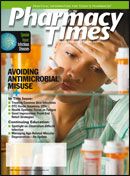Publication
Article
Pharmacy Times
Confusing Drug Names: Let's Resolve to Do Better
Author(s):
Our 2009 resolutions should include stepped-up efforts to prevent drug name mix-ups and reduce dispensing errors.
Dr. Gaunt is a medication safety analystand the editor of ISMP MedicationSafety Alert! Community/AmbulatoryCare Edition.
As we start the New Year, let'schallenge ourselves to do moreto prevent drug name mix-ups.Reports involving dispensing errors dueto drug name mix-ups are a regular topicin this column and in many news storiesinvolving medication errors. Often, themix-ups are related to drug names thatlook or sound alike, or to look-alikepackaging. It is not unusual that suchmix-ups lead to patient harm, yet thevast majority of these mix-ups could beprevented if the pharmacist knew theindication for the medication.
Name Pair Confusion
Five different name pairs that hadbeen confused and led to dispensingerrors were reported in the inauguralissue (September 2002) of the ISMPMedication Safety Alert! Community/Ambulatory Care Edition alone. Forexample, one article in that issue focusedon recommendations for preventingmix-ups between Zyrtec (cetirizine)and Zyprexa (olanzapine). At that time,reports had been received from manypractice settings about such mix-ups.In one reported case, a patient who wasgiven Zyprexa in error suffered a headinjury after losing consciousness.
Subscribe to Newsletter
Contact ISMP at 215-947-7797, or send an
e-mail message to
linkEmail('community','ismp.org');
.
Another report described a previouslycontrolled psychotic patient whoaccidentally received Zyrtec instead ofZyprexa and then relapsed. Since thattime, in an effort to reduce errors, EliLilly has changed the Zyprexa productlabel to highlight the letter charactersthat differ from Zyrtec. Eli Lilly alsohas alerted practitioners to this issuethrough direct mail campaigns andjournal advertisements. Still, ISMP hascontinued to receive reports of this mixup,including one from an emergencydepartment nurse who explained thatstaff had treated a 7-year-old child whohad received 3 doses of Zyprexa 10 mginstead of Zyrtec 10 mg after his prescriptionwas filled incorrectly at a localpharmacy.
This is just one of many examples ofcommonly confused drug names thatcontinue to cause mix-ups and patientharm. (For ISMP's List of ConfusedDrug Names, go to: www.ismp.org/Tools/confuseddrugnames.pdf.) Ideally,drug names that are similar or mightcontribute to confusion with existingdrug names would never be approvedfor use in the marketplace. Althoughmany drug manufacturers and the FDAtest new drug names for safety, errorpronedrug names may be approved. Oneexample includes confusion betweenYaz (drospirenone 3 mg; ethinyl estradiol0.02 mg) and Yasmin (drospirenone3 mg; ethinyl estradiol 0.03 mg), whichwas discussed in my June 2008 columnin Pharmacy Times.
Error Prevention Strategies
ISMP works to promote error preventionstrategies that prevent confusion.Some of the lower leverage strategiesfocus on human vigilance (education,awareness, auxiliary labeling, patientcounseling, etc). Although often fairlyeasy and inexpensive to implement,these strategies alone may have limitedlong-term effectiveness becausethey rely on human intervention, whichmay not occur. Unfortunately, theseare often the only strategies selected toachieve change.
Higher leverage strategies that addresscontributing factors inherent inthe health care delivery system (eg,computerized prescribing, bar-codescanning, and hard stops in computersystems for commonly confused drugnames) are used less frequently becausethey may be more difficult or expensiveto implement. For more information onthe impact of various error reductionstrategies, see my April 2007 column inPharmacy Times.
To prevent drug name mix-ups, wehave to change our focus and buildmore powerful safety measures into oursystems rather than simply relying on"fixing" individual behavior.







